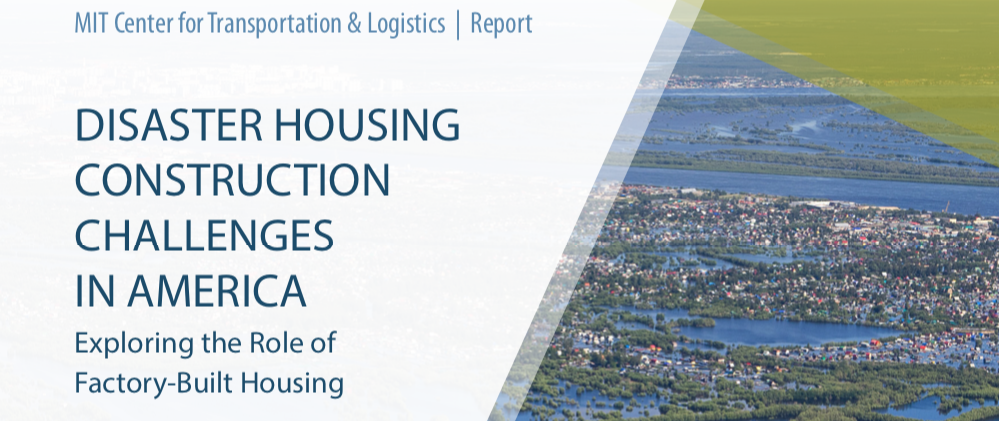Report details urgent need to reform policies on factory-built housing
Constructing factory-built houses could provide a fast, relatively cheap solution to the critical challenges of disaster and affordable housing in the US, but regulatory and funding issues severely limit its deployment according to a report titled Disaster Housing Construction Challenges in America from the MIT Humanitarian Supply Chain Lab.

Factory-built houses are constructed using modular, panelized, and pre-assembled methods. They can be built outside of areas damaged by hurricanes or tornados and can be brought into the disaster area if homes have been destroyed. This innovative option could also be used to alleviate the shortage of affordable housing stock that afflicts many communities across the nation. Yet a mere three percent of American single-family houses are factory-built, says the report.
Regulations and policies ill-suited to meeting the demand for disaster and affordable housing options are partially to blame for the low take up of factory- built structures.
When financial assistance is not a viable option, the most commonly used federal tool for direct housing is manufactured housing. These homes are designed to be permanent but are utilized temporarily to provide disaster survivors with direct housing. A manufactured house can provide housing for a family for more than 50 years, but the US Congress requires that temporary housing assistance provided by the Federal Emergency Management Agency (FEMA) last no longer than 18 months. FEMA’s temporary deployment of a manufactured home costs roughly $110,000 to $129,000 per unit, the report finds.
States that receive federal recovery dollars have leveraged factory-built homes to address combined disaster and affordable housing challenges. However, these instances are rare because disaster recovery block grant funds usually arrive long after a disaster occurs – after temporary housing assistance is likely to be discontinued. For example, Congress appropriated $1.3 billion for flexible housing construction and repair after Hurricane Ike struck in 2008, yet virtually none of these funds were expended until after the 18-month timeline for temporary housing.
“These overlapping roles and competing perspectives between states, tribes, and territories and the federal government highlight a piecemeal approach to disaster housing that effectively excludes factory-built homes as a viable option for post- disaster housing,” the report states.
Yet these issues can be resolved, and the report offers recommendations for helping emergency managers, housing agencies, policymakers, community leaders, and construction companies to address the challenges.
“Despite the problems America faces with affordable housing and disaster housing, we lack a strategy that brings temporary-to-permanent housing into our collective toolkit. Improved construction technology alone cannot solve these issues, but factory-built housing should be part of the solution,” says Michael Windle, Researcher at the Humanitarian Supply Chain Lab and author of the report.
Factory-built housing is not a panacea, but it should be a key component of the nation’s housing stock at a time when both the severity and frequency of natural disasters are increasing, and states continue to struggle to meet the demand for affordable housing.
For more information, contact the report author Michael Windle at mwindle@mit.edu.
Download the full report here: https://dspace.mit.edu/handle/1721.1/122651